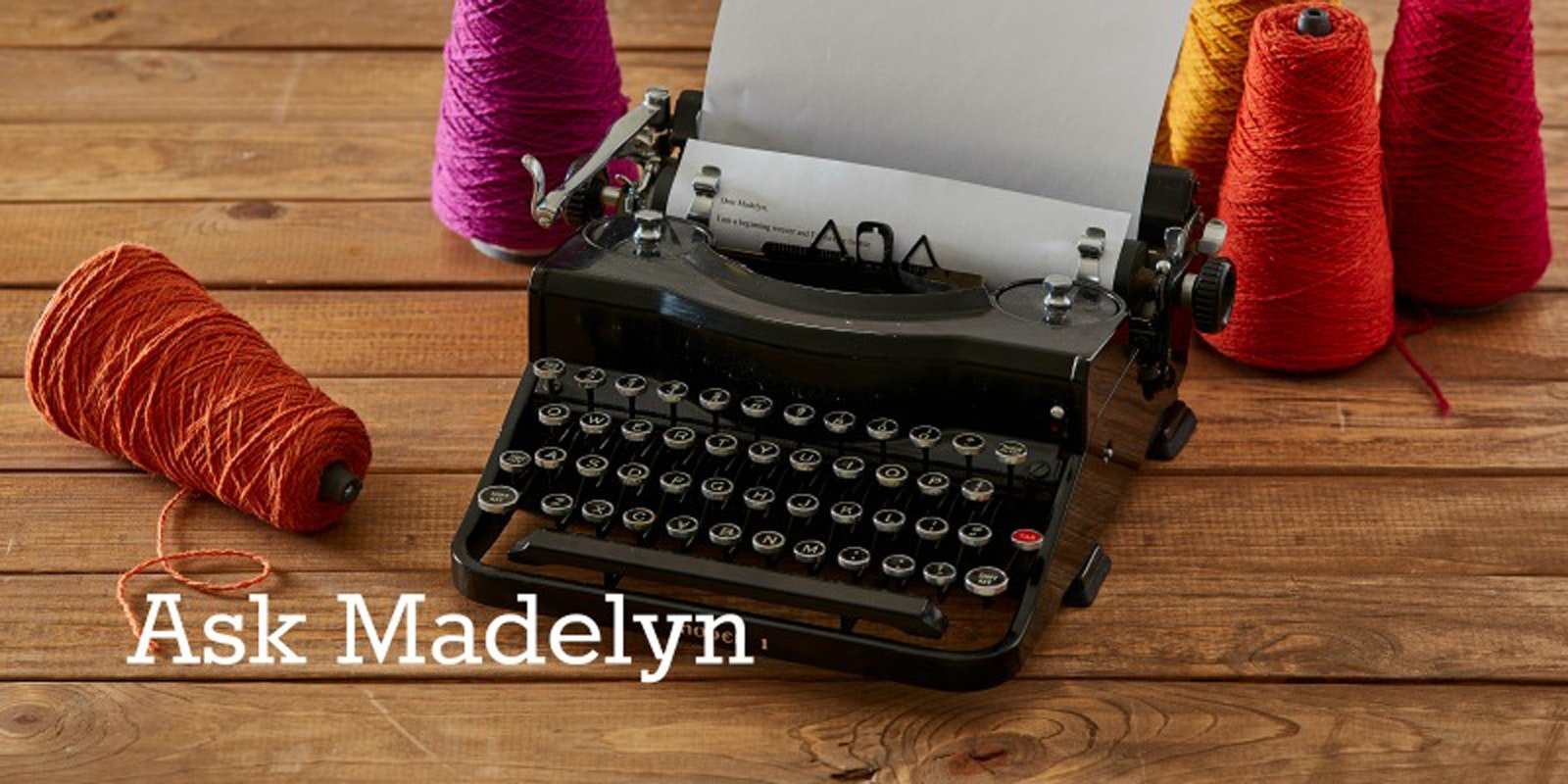Hi Madelyn,
I just finished a placemat project with 3/2 mercerized cotton and while I was weaving, my project was “smiling”, that is, the edges were higher than the middle. I was doing some huck and some huck lace. I beamed the warp using a filled milk bottle for weight, adjusting from time to time. When I washed and dried the placemats, they seem fine. Can you tell me why this happened and what I can do about it?
Betty
Hi Betty!
I’m not sure what process you are using for applying tension with the filled milk bottle as you are beaming, but in general, your warp tension may not have been even enough and/or may not have been firm enough. It’s important to have firm and even warp tension. When I beam, I pull very hard on two-inch sections of warp after every turn or two of the warp beam. There are other successful ways to achieve firm and even tension, but each has its own requirements for success.
There are several possible reasons for a “smiles” result. Usually, where warp threads are tighter than the rest of the warp, the fell dips downward (toward the weaver). Where warp threads are looser than the rest of the warp, they spread upward, toward the reed. So, first, check to see that the tension is even and firm all across the warp. (When weavers complain of “frowns,” the edge warp threads are usually more tightly tensioned than the rest of the warp; with “smiles" they are usually looser.)
Another reason for the edges to turn upward (the “smile”) is too much draw-in. If the weft pulls the threads closer together at the edges, the warp becomes denser there and the weft can’t be beaten to achieve the same picks per inch as in the places where the warp is more open. If you make sure that your weft angle is about 30 degrees and beat on a closed shed, you will not have draw-in (see Photo a). There are other ways to avoid draw-in, but this one is fool-proof and can be put into words. In addition, to avoid draw-in with pieces wider than a foot, I always use a temple. Even with a temple, however, the weft angle is essential.
And finally, if you have edges in huck lace that are plain weave but lace in the center, the plain weave areas will build up more than the lace areas. You can see that this has happened in Photo b, but it is not enough to cause problems. (And while it is not shown in Photo b, I have been using a temple with this piece.) I suspect that this was what was happening with your project, since the placemats finished well and that you did achieve even warp tension. Usually, this is just a result of the interlacement and the threads even out when the piece is finished and pressed.
I hope this helps!
Madelyn
If you have a weaving question we would love to hear from you! Please email Madelyn! Pictured above: Summer Lace Placemats and Mug Rugs by Suzie Liles Handwoven May/June 2017. View related & recent "Ask Madelyn" posts!



